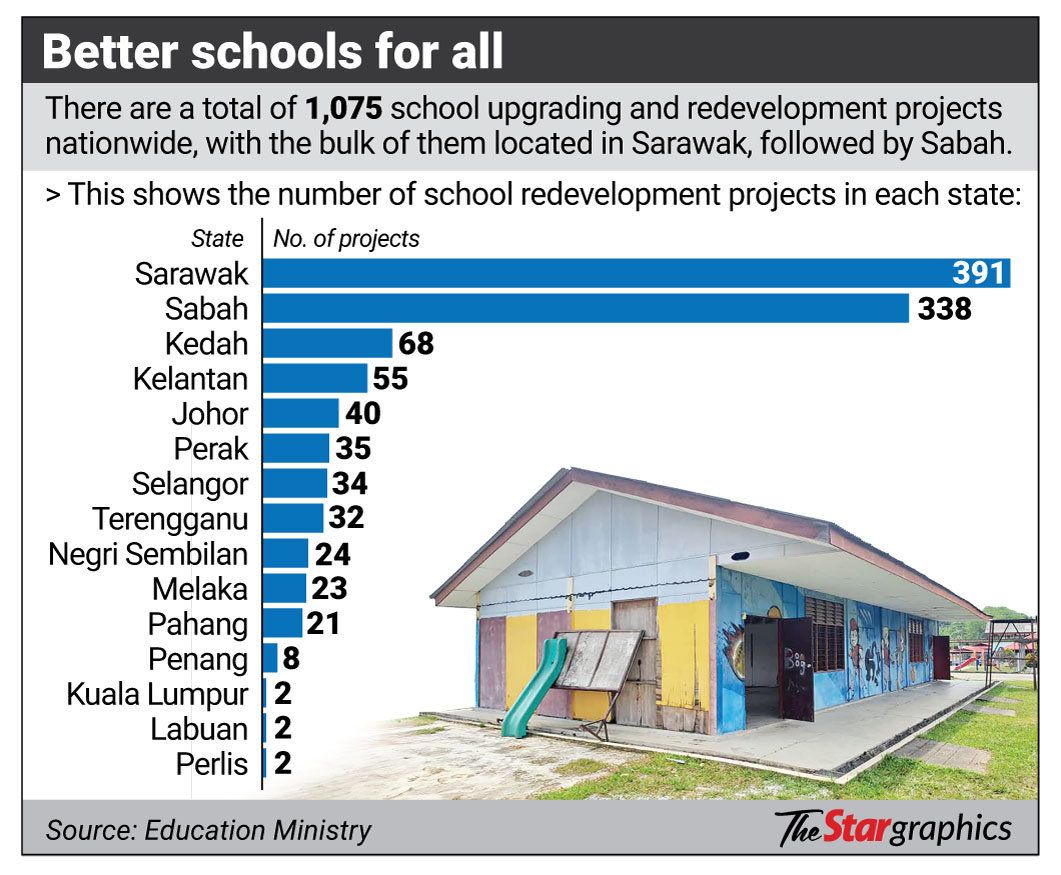Much-needed upgrades: Lessons are taught to pupils from the pre-school level until Year Six, as well as special education at the SK Bandar Baru Bangi in Bangi, Selangor. The roof of the block in front has been repaired while the one at the back is pending repairs. — FAIHAN GHANI/The Star
PETALING JAYA: Dilapidated school buildings will be upgraded faster through the expansion of a pilot project that cuts down on red tape and speeds up work.
Such efforts aim to redevelop run-down school buildings in a shorter time while maintaining good quality construction to provide students with a better learning environment.
The pilot project, which began last year involving three schools, has been successful, says the Performance Acceleration Coordination Unit (Pacu) that comes under the Prime Minister’s Department.
ALSO READ: MULTIMEDIA: A make-over for old schools in Malaysia
Also confirming the expansion is the Education Ministry’s development division that said among the practices of the pilot project were to simplify the procurement and demolition process in upgrading dilapidated school buildings.
So far, 1,075 projects to repair dilapidated schools nationwide were approved with an allocation of RM8.35bil.
As of July 13, some 65.9% of such projects (708) have been completed, while the remaining 367 projects were still work in progress.
Examples of works are roof repairs and maintenance, building new classrooms and toilets as well as rebuilding old school buildings.
Pacu director Nurdiana Puaadi in an interview said the success of the model would lead to its expansion, targeting the widespread problem of dilapidated school buildings.
“Our goal is to create a long-term strategy that not only addresses immediate issues but also maintains and improves school infrastructure on an ongoing basis.
“This includes working closely with relevant ministries and departments to streamline processes and ensure efficient project management and execution,” Nurdiana said.
The schools involved in the pilot project are SK Bandar Baru Bangi in Selangor, and SK Tan Sri Ghazali Jawi and SK Sri Adika Raja, both in Gerik, Perak.
The government implemented a project to rebuild dilapidated buildings in schools across the country starting in 2016, with priority given to schools in Sabah and Sarawak.
A dilapidated school is defined as one with facilities and buildings that are not perfect, do not function and are not safe to use.
In March, it was reported that some dilapidated school buildings have remained unrepaired for as long as 12 years as the Education Ministry lacked funding.
This was according to Public Accounts Committee chairman Datuk Mas Ermieyati Samsudin who said the ministry had to prioritise schools that were more in need, leading to the delays.
Nurdiana said Pacu has identified primary causes of delays in such projects.
“These include the capacity of contractors or suppliers, rigid work processes, labour factors, the materials used in construction, bureaucratic hurdles and existing regulations or laws.
“These factors contributed to the prolonged time frame required for the completion of these school projects,” she added.
Pacu, through the Special Taskforce Agency Reform (STAR), chaired by the Chief Secretary to the Government, has suggested a few solutions involving the process of work to shorten the procurement process period while maintaining good quality of work.
“It is important to acknowledge that dilapidated school buildings continue to emerge periodically, despite our efforts to completely settle all identified projects since 2016.
“However, the model applied in the pilot project appears to be practical and effective, particularly in addressing delays that have plagued previous efforts,” said Nurdiana.
She added that the main aim of the project was to provide a conducive environment for students and teachers.
“We believe schools should make students feel safe and therefore, we are committed to contributing our efforts in beautifying and maintaining dilapidated school buildings,” she said, adding that the ministry planned to complete 40 such projects this year.






